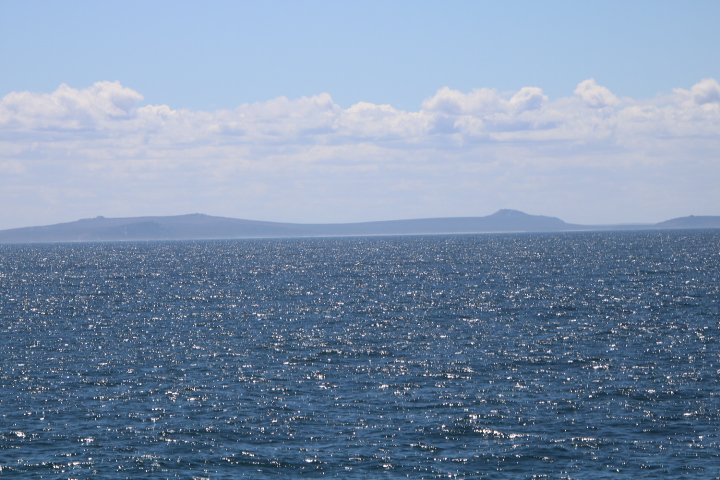At 08:30 and on a much smoother sea we had 86 miles to go to reach Cape Town. Overnight the improved sea conditions had allowed us to make up 1.5 hours of the anticipated delay.


After breakfast we sited South Africa for the first time at St. Helena Bay with 62 miles to go.



Having crossed the South Atlantic as earlier mariners did it is interesting to note the essence of historical continuity in all of this. The winds and the waves still command here.
In the 17th century English and Dutch ships made regular calls here at Table Bay to take on water, rest crews who were often ill and barter for livestock and other food with the local Khoikhoi farmers. After months at sea the bay was a welcome respite and with its Mediterranean climate was and ideal place to rest and recuperate. The crew of a shipwrecked Dutch ship were stranded here for a year. When they returned to the Netherlands and reported how good it all was the Dutch United East India Company decided to establish a fort, hospital and farms on the Cape to provide resources for Dutch vessels from 1652. This led to Dutch settlement on the Cape Peninsula. However, there was a shortage of labour to cope with the demands of this extensive settlement and economic expansion, so the Dutch resorted to slave labour by importing people from their outposts in southeast Asia, such as Batavia.
Once the Cape was secure the refuelling stop was expanded into a colony and by the 18th century extended to present day Stellenbosch. Unfortunately, the indigenous Khoikhoi – known as the Hottenhots to the colonialists – a term in old Dutch related to the stammer, stutter or click of the people’s language was used for all nomadic pastoralists and non-Bantu people, now clearly derogatory. They were being forced out of their homeland but the end for these people came in 1713 when a Dutch ship sent laundry ashore which contained a smallpox virus and by the end of the year the ‘locals’, who had no immunity from this disease, were virtually wiped out. Intrusions and take overs of indigenous people’s land and property continued. Understandably there was massive unrest and although the British took control in 1806 there was little change and conflict ensued until well after WW2.
We docked close to Cape Town’s old harbour. It was here that the great liners from Southampton docked. H’s connection with this is via his father’s repatriation from India with a refuelling stop here after rounding the Cape. Many summer holidays included visits to Southampton where we would park near the Ocean Terminal or stand on the end of Hythe pier where twice a week, we would see the Union Castle ships with their lavender and white superstructure dock on what was then one of the most important express liner routes carrying passengers, cargo and mail on a round-Africa route. His ship, the Arundel Castle, which we saw regularly, was commandeered for use as a troupe ship in 1947 and he returned home on this from Bombay, refuelling in cape Town, Crossing the Line just as we have done but in the opposite direction.
The approach to Cape Town was spectacular and with the pilot on board we made our way to Dock E on the edge of the city centre.





We have travelled 6533 miles from Lisbon which is slightly shorter than the planned route because we were unable to go to Senegal. Tomorrow our explorations of the Cape area begin.
